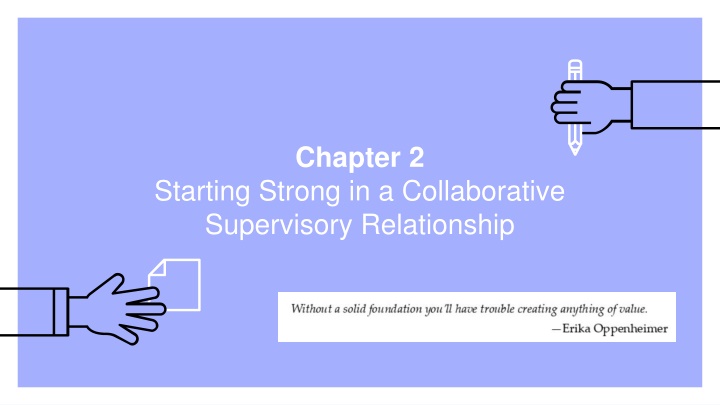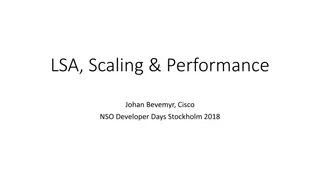
Effective Strategies for Collaborative Supervisory Relationships
Learn how to start strong in a collaborative supervisory relationship by actively contributing to all aspects of supervision, setting clear expectations, preventing barriers, and understanding diverse communication styles for better outcomes.
Download Presentation

Please find below an Image/Link to download the presentation.
The content on the website is provided AS IS for your information and personal use only. It may not be sold, licensed, or shared on other websites without obtaining consent from the author. If you encounter any issues during the download, it is possible that the publisher has removed the file from their server.
You are allowed to download the files provided on this website for personal or commercial use, subject to the condition that they are used lawfully. All files are the property of their respective owners.
The content on the website is provided AS IS for your information and personal use only. It may not be sold, licensed, or shared on other websites without obtaining consent from the author.
E N D
Presentation Transcript
Chapter 2 Starting Strong in a Collaborative Supervisory Relationship
There are serious risks associated with supervision that is solely directed by the supervisor, rather than collaboratively directed in a participatory approach. -Clark et al., 1985 2
Supervision is collaborative Both parties should actively contribute to to all aspects of supervision including: Goals Activities Outcomes Helps to facilitate skill development and maintains the health of the supervisory relationship Supervisee has more agency to identify goals 3
Collaboration can prevent barriers A strong foundation can prevent barriers and frustrations from ever developing If barriers arise, they are more easily dealt with Beginning supervision with a clear framework increases the likelihood of better outcomes for clients and supervisee 4
Starting strong: core components Expectations and Expectations and Conditions Conditions Interpersonal interactions Professionalism Timeliness Meeting deadlines Responsiveness to feedback BACB Contract BACB Contract Committed and Committed and Positive Relationship Positive Relationship Acknowledging the learning process Attentiveness Welcoming diversity Continued communication and feedback 5 diversity
Collaboration can prevent barriers A strong foundation can prevent barriers and frustrations from ever developing If barriers arise, they are more easily dealt with Beginning supervision with a clear framework increases the likelihood of better outcomes for clients and supervisee Setting clear expectations helps develop rapport, trust, and respect 6
Everyone communicates differently Both parties enter supervision with their own preferences, experiences, and communication styles When these are very diverse from each other, it can be useful to use structured processes or activities or activities to help bridge the gap 7 structured processes
Everyone has feedback preferences Supervisees may have learning histories that make feedback seem aversive Supervisors should set the expectation that feedback is valuable and does not have to be aversive Avoid the feedback sandwich Provide specific feedback for areas of growth AND areas of strength How and when do you like to receive How and when do you like to receive feedback? feedback? 8
Feedback is bi- directional and fluid One size does not fit all supervision should evolve evolveas opportunities arise opportunities arise or preferences change change Supervisees should have the opportunity to provide feedback to their supervisors! This feedback can be used to modify supervision to work better for both parties preferences 9
Discussion Questions What does the word feedback mean to you? How do you prefer to receive feedback? (E.g., in person, written, privately, public, unsure?) How do you think you would like to provide feedback to your supervisor(s)? What are some professional skills that you hope to learn or improve through supervision? 10
A good start requires clear communication To create a positive, healthy supervisory relationship, the supervisor should focus on setting clear expectations, ensuringshared understanding shared understanding of the conditions off supervision, and creating a committed and positive relationship relationshipbased on open communication and feedback open communication and feedback. setting clear expectations, committed and positive 11





